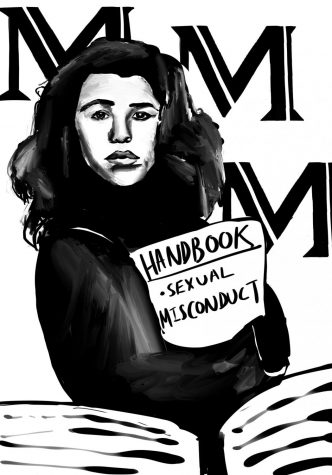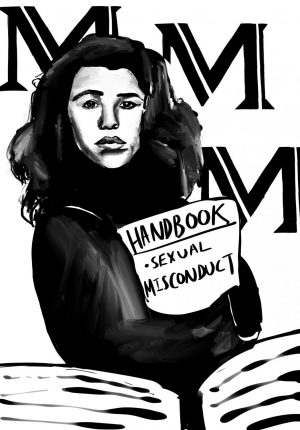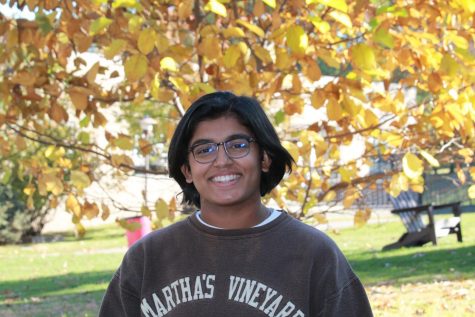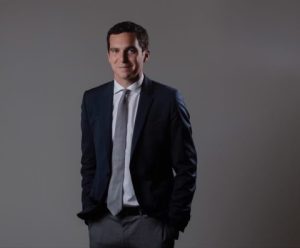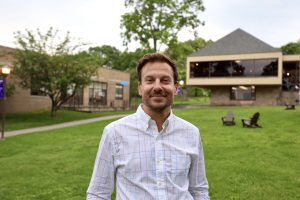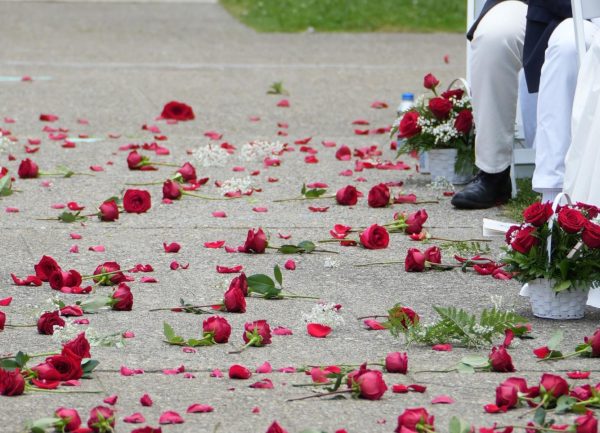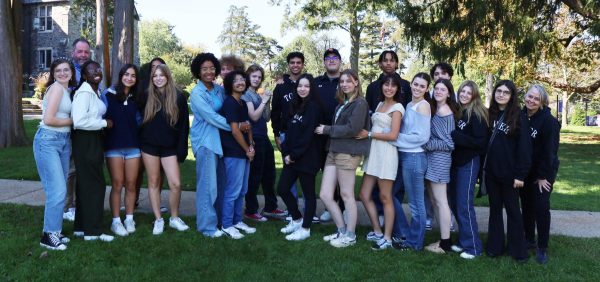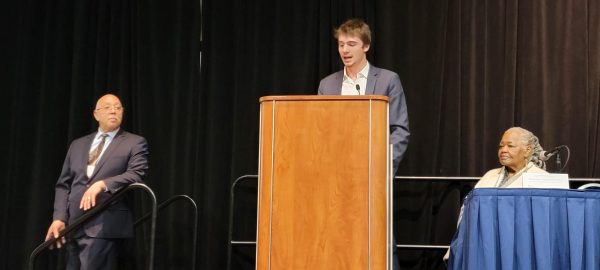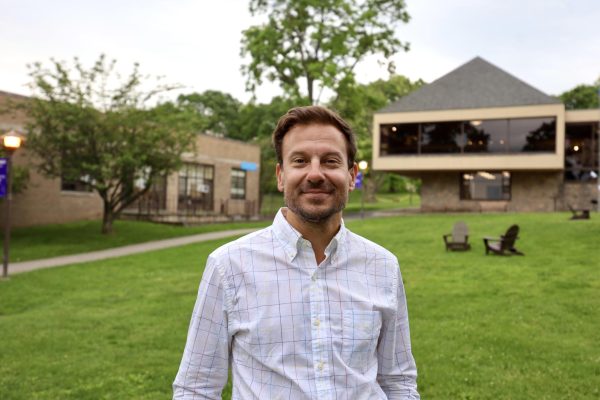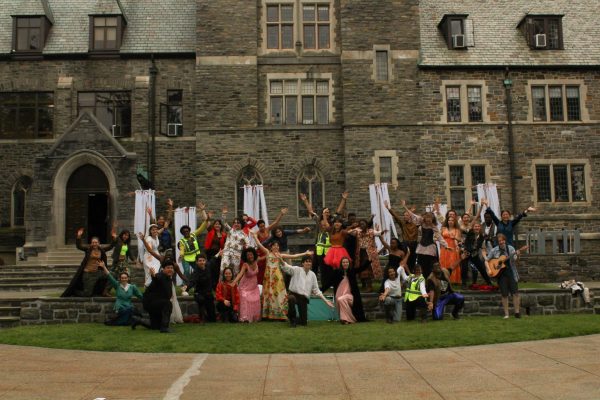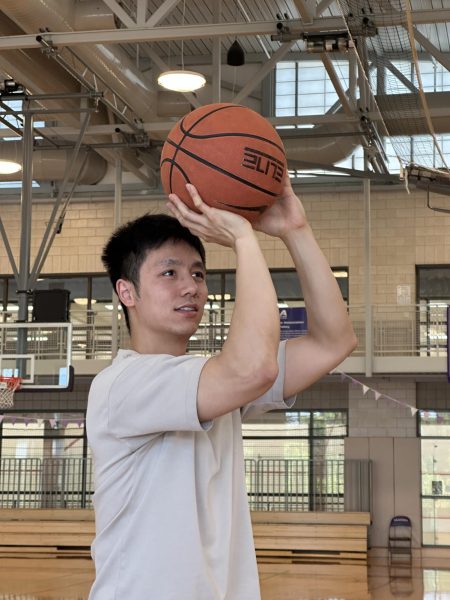Student-teacher boundaries: Defining fine lines
Student-teacher relationships are integral components to safe and productive learning environments. However, teachers must be able to care for their students without overstepping any professional boundaries.
June 8, 2021
Following the separation of former Upper School Science Teacher Andres Cárdenas from the Masters community in April 2021, for what Head of School Laura Danforth called in a community-wide email, a “pattern of boundary-violating interactions” with students, many began to reflect on their own teacher-student relationships, and how exactly these boundaries are defined and managed, by both individuals and larger school communities.
The majority of teachers and students at Masters believe that building connections with one another is an integral part of learning at school, and when done properly, can have benefits.
Francesca Gossett, a new junior at Masters, said she feels appropriate student-teacher relationships have their place in school communities and should be encouraged.
“I feel like people don’t sign up to be teachers simply to teach. I feel like they’re there to make connections with students and help them learn both school material and life skills. There needs to be a place for that sort of connection and emotional awareness between teachers and students,” Gossett said.
In order to keep these relationships healthy and clarify boundaries within communities, there are experts who meet with schools to make guidelines as clear as possible.
Consultant Katie Koestner, who has already worked with Masters to transform policies and procedures surrounding sexual misconduct and assault, works with schools and administrators to help them develop policies that are as effective as possible, both in line with legal guidelines and more personal community guidelines.
Koestner explained how she would help a school develop a policy for teachers texting students at midnight, as a random example.
“It’d be pretty weird if a teacher texted a student at midnight, even if it was about algebra, and it may not have been against the law, but it could’ve been preventable,” she told Tower.
Koestner said that if she were to be called into a school for a case involving student-teacher boundaries, her goal would be to help that school shape a policy based on the incident and her previous experience, in tandem with legal backtracking, if necessary, to analyze what exactly could have been prevented.
Many teachers, like English department chair Geoff Nelson, find themselves grappling with how to be a caring teacher and support their students, while making sure to draw necessary lines and maintain professionalism at the same time.
“There’s this thought process for teachers of having to balance wanting to care for students and being emotionally available, while also not crossing any boundaries,” Nelson said.
Masters does provide training and guidelines to teachers about appropriate boundaries, according to Masters’ Director of Human Resources Connie Hewitt. She said Masters asks that all faculty and staff complete two online training courses: “Protecting Children: Identifying and Reporting Sexual Misconduct,” and “New York United Training: Prevent Discrimination and Harassment.” Proof of completion is required every academic year for all employees and new hires must complete both courses within one week of joining Masters. The trainings are provided by the company United Educators.
Danforth’s email included examples of unacceptable boundary violations at Masters such as, “communicating in an intrusive and unprofessional manner with students (in conversation, through social media or via text) about intimate topics and inappropriately sharing highly intimate details of one’s personal life with students.” These guidelines fall in line with many similar school district policies in the area.
Stefanie Carbone, an Upper School counselor at Masters, said that she believes when these types of emotional and physical guidelines are set in place and acknowledged, it can be reassuring for the entire community.
“As humans, we are wired for predictability and planning, and those boundaries and expectations give us a sense of security and scaffolding, especially during times of uncertainty or increased stress,” Carbone said. As humans, we are wired for predictability and planning, and those boundaries and expectations give us a sense of security and scaffolding, especially during times of uncertainty or increased stress.” — Stefanie Carbone, Upper School Counselor
Nelson added that he thinks there are several different ways schools can make sure transparency and empowering the usefulness of reporting these types of violations as soon as they are realized are utilized to the fullest extent.
He said, “I think openness and accountability at schools are key. In a good institution, students will feel comfortable reporting what makes them feel uncomfortable. Organizational structures that make it increasingly easier to catch violations before harm is done and that make sure students are protected are most important.”
Assumptions about student-teacher relationships and what it looks like when someone may be violating a boundary remain prevalent today. Beyond Masters, oftentimes inappropriate student-teacher relationships that have been widely publicized and discussed more often than not involve a male teacher and a female student. While these specific types of violations may certainly be common, schools, especially recently, are being reminded to remain unbiased and consider every possibility in such a circumstance.
Koestner explained that many times, schools are reluctant to adopt harsh policies regarding student-teacher relationships, because they want their students to feel that there aren’t walls being put up and they can talk to a trusted teacher. In short, they don’t want to make the faculty seem “less friendly.” Private schools especially are often slower to change because parents are paying in part for a closer relationship with the school, faculty and staff. Recently though, the tone at many institutions has shifted, as more and more schools see the necessity for clear policies regarding these types of boundaries.
Koestner said, “More and more schools are realizing that you just can’t be friends with your teachers. They should be your mentors, but not your friends.”




